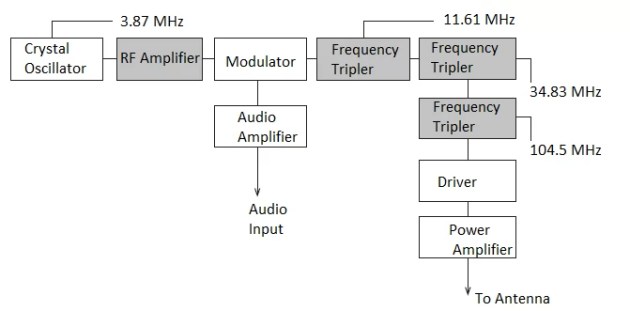A tuned amplifier operates over a band of frequencies centered on a resonant frequency. Its two main requirements are to provide high gain and good selectivity.
We have several applications in telecommunications systems where it is necessary to amplify a narrow band of frequencies centred on one frequency. A typical example is shown in the frequency-modulated transmitter illustrated below:

In this case, the radio frequency (RF) amplifier is used to increase the amplitude of the oscillator output, while the frequency tripler stages are used to increase the transmitted frequency to 104.5 MHz. Both these stages are forms of tuned amplifier.
Related: The Basic Principle of Operation of an Oscillator
The applications of tuned amplifiers include:
You can also read: The Fundamentals of Oscillators in Communication Systems
Image source Pixabay The rate of the development of energy sources that are alternatives to…
Image by Pixabay Automation is transforming industries worldwide, and construction is no exception. Companies are…
A closeup shot of a warning lamp in the street at night, image by Freepik…
Impeller flowmeters at times referred to as paddlewheel meters are one of the frequently utilized…
Photo by Héctor Martínez on Unsplash Introduction Yes! If you have old electronic devices that you…
The cosine of the angle between voltage and current in an AC circuit is referred…